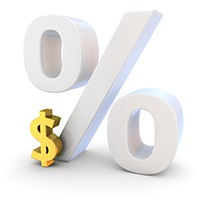Last updated: January 29 2014
Interest Rates Staying Put…But Not the Loonie

Every six weeks the Bank of Canada announces its interest rate policy. Last week, the Bank of Canada maintained the benchmark interest rate at one percent, signaling the continuation of the longest span of inactivity on the issue ever.
The Canadian dollar fell more than half a cent, in response. The loonie has not fallen under the 90-cent threshold since July 2009. While that may please exporters, the news is not great for others – retirees who now must pay for the costs of owning a US property with a devalued dollar, for example. . . and things could get worse.
A senior wealth advisor at ScotiaMcLeod, Andrew Pyle, said in an interview on CBC that he believes the Bank of Canada would like to see a lower valued loonie to boost exports. "We’ll probably see the Canadian dollar get down to 85 cents against the U.S. dollar and that means we’re not going to see any rate cuts in Canada,” he said.
The lower loonie could notch up inflation, as well, forecasting to be 1.44%, according to the website Trading Economics, which quotes Statistics Canada data. The inflation rate in Canada was 1.20 percent in December of 2013 and has averaged 3.21% from 1915 until 2013. It reached an all time high of 21.60% in June 1920 and a record low of -17.80% in June of 1921.
In Canada, the most important categories in the CPI basket are Shelter (27.5% of total weight), Transportation (19.3%) and Food (16.1%).
What does this mean for investors and wealth advisors in Canada? A continued focus on best rates of return and the lowest possible taxes payable on both income and capital will go a long way in hedging inflationary pressures and currency fluctuations in the near term.
